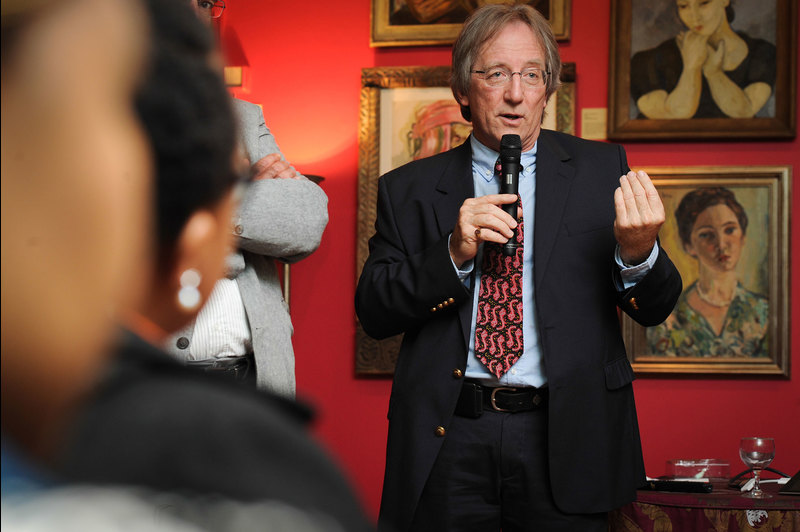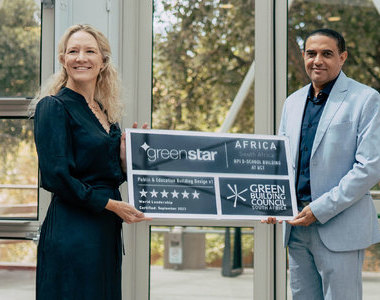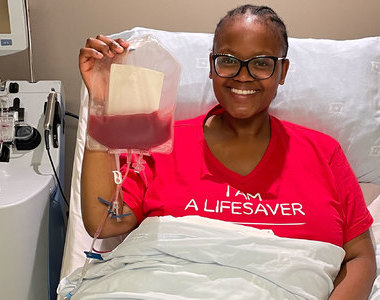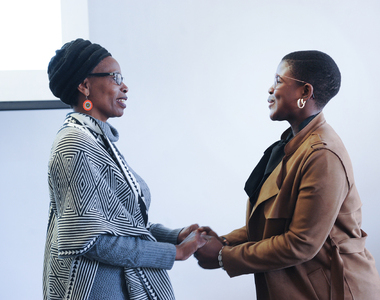COVID-19: a vaccine guide for beginners
19 February 2021 | Story Niémah Davids. Photo Michael Hammond. Voice Neliswa Sosibo. Read time 8 min.
Health officials in South Africa are in a race against time to roll out Phase 1 of government’s COVID-19 vaccination plan in a bid to curtail further devastation caused by the COVID-19 pandemic. The University of Cape Town’s (UCT) Professor Ed Rybicki unpacks the need-to-knows about COVID-19 vaccination.
The roll-out plan will be divided into three categories: Phase 1 will focus on frontline healthcare workers; Phase 2 will prioritise essential workers, the elderly and persons with comorbidities; and Phase 3 will focus on all other persons over the age of 18.
In recent weeks scientists have stressed that the rapid vaccination of at least two-thirds of the South African population is necessary to achieve herd immunity and to help control the spread of the virus in the country.
UCT News spoke to Professor Rybicki, who is the director of the Biopharming Research Unit in the Department of Molecular and Cell Biology. He is a plant virologist by training and a biotechnologist and vaccinologist by funding circumstances. He has extensive experience in molecular virology and virus diversity studies with plant, human and animal viruses.
He offered some insights on vaccine development.
Niémah Davids (ND): Please give an overview of the vaccine development process.
Ed Rybicki (ER): Vaccines are developed in a number of ways, and licenced vaccines are one of the following types:
- Live attenuated vaccines – produced by modifying a disease-producing virus or bacterium in a laboratory. The resulting vaccine organism retains the ability to replicate and produce immunity and doesn’t cause illness (TB, measles, mumps and yellow fever vaccines).
- Inactivated vaccines – a vaccine that consists of virus particles, bacteria or other pathogens that have been grown and later killed in order to destroy disease-producing capacity (cholera, hepatitis A, some polio, older flu vaccines and at least two SARS-CoV-2 vaccines).
- Subunit vaccines – a vaccine that consists of one or more antigens purified from the pathogen. The antigens involved don’t need to be protein subunits (diphtheria and tetanus toxoids and split influenza vaccines).
- Nucleic acid vaccines consisting only of DNA and RNA – these vaccines express one or more genes from a pathogen that stimulate the immune system in a similar way to an infectious agent, without causing disease. RNA vaccines produced to fight SARS-CoV-2 that express the virus S (surface) protein are the only such vaccines approved thus far.
- Vaccine protein genes vectored by or expressed in another avirulent virus – examples are Ebola virus proteins in vesicular stomatitis virus, and chimpanzee and human adenoviruses expressing the SARS-CoV-2 S protein (AstraZeneca, Sputnik V and Johnson & Johnson’s vaccines).
ND: Tell us what takes place in the body once the SARS-CoV-2 vaccine is injected and how it will protect us from the virus?
ER: There are presently two different types of SARS-CoV-2 vaccines in use. One produces the vaccine protein at the site of the injection (eg mRNA, adenoviruses) so that the vaccine protein is not immediately exposed to the immune system. The other type is exemplified by inactivated vaccines and subunit vaccines – here the vaccine protein is immediately exposed to the immune system after injection.
“Immunised persons, or people re-exposed to the virus, would have immune systems that react and respond immediately to the virus’s presence.”
In both cases, T cells and B cells are stimulated. This can happen either by B cells binding directly to the SARS-CoV-2 protein or by the binding of T cells to cells displaying portions of the virus. This binding process results in additional stimulation. The T cells then multiply, begin to differentiate and further stimulate the B cells and other cells of the immune system. As a result, these stimulated cells build a bank of long-lasting memory cells. B cells transform into plasma cells, or specialist antibody-producing cells if the stimulus continues for long enough.
In a naturally infected person, virus clearance begins to occur as circulating virus particles are mopped up by antibodies, and the infected cells get killed off by both antibodies and T cells. Immunised persons, or people re-exposed to the virus, would have immune systems that react and respond immediately to the virus’s presence in order to fight it off quickly, with no or only very mild disease developing.
ND: There are a few known vaccines, the more common ones being AstraZeneca, Pfizer, Johnson & Johnson and Moderna. Please elaborate on their efficacy, safety and differences.
ER: AstraZeneca’s vaccine is a modified chimpanzee adenovirus that causes a cold-like disease in chimps and includes the S protein gene of SARS-CoV-2. It does not multiply in injected individuals, but expresses large amounts of S protein, and two injections are necessary.
Johnson & Johnson’s vaccine consists of the human adenovirus 26 that causes the common cold in humans. Like AstraZeneca it also expresses the S protein but is only given as a single injection.
Pfizer and Moderna are both messenger RNA vaccines, administered as two doses. The Pfizer vaccine is apparently quite reactogenic and may cause some severe temporary side effects, such as anaphylactic shock, probably as a result of an allergic reaction to its stabiliser. Moderna’s vaccine, on the other hand, is not as reactogenic, and causes mild and temporary symptoms such as headaches, dizziness and fever. Both vaccines have an efficacy rate of above 90% in terms of preventing disease.
ND: Explain the first and second vaccine shot – why it’s necessary and how it will work.
ER: The two-shot vaccines use the prime–boost principle. The first dose stimulates an immune response, and the second, administered a month later, stimulates the same reaction as re-exposure to the pathogen, which is a markedly amplified response compared with the first dose.
The Johnson & Johnson single-shot vaccine just means it takes a bit longer to reach the same level of immunity when compared with the others.
ND: Is it necessary for people who have already recovered from COVID-19 to take the vaccine?
ER: A recent study conducted in the United States revealed that vaccinating people who had recovered from COVID-19 resulted in significantly higher levels of antibodies after injection. This means that it’s probably a very good idea to get vaccinated because it could possibly prevent reinfection.
“All the vaccines are safe for human use.”
ND: How do we change the perception that vaccines are detrimental to overall health and well-being?
ER: I honestly don’t understand why people are anti vaccines at all, and most especially anti SARS-CoV-2 vaccines. All vaccines currently in use have been through Phase 1, 2 and 3 trials, albeit considerably quicker than used to be the norm. All the vaccines are safe for human use.
As for the long-term vaccine side effects, which seem to be a concern among people, I would be more worried about the long-term COVID-19 side effects. Even inapparent or very mild infections may be followed by severe long-term effects such as lethargy, mental fog and clotting disorders that can lead to strokes, joint and muscle pain, anxiety and depression, and cognitive impairments. I don’t know about you, but I’d rather have a mild short-term fever or headache than such [long-term] complications.
Advocacy is about all that will work to change this mindset – that, and continuing to see people die around us, unfortunately.
 This work is licensed under a Creative Commons Attribution-NoDerivatives 4.0 International License.
This work is licensed under a Creative Commons Attribution-NoDerivatives 4.0 International License.
Please view the republishing articles page for more information.
Listen to the news
The stories in this selection include an audio recording for your listening convenience.





















































































































































































































































































































































































